GIS, or Geographic Information Systems, play a crucial role in nature conservation. Every day, mapping and spatial analysis are aiding conservation decisions, protected areas designation, habitat management on reserves and monitoring of wildlife populations, to name but a few examples. Want to learn more about how remote sensing is used in conservation? Check out the first two episodes of this season of Tech Tutors, where our Tutors answer the questions How do I use open source remote sensing data to monitor fishing? and How do I access and visualise open source remote sensing data in Google Earth Engine?
You can also check out our Virtual Meetup Archive for a range of panels that overlap with Remote Sensing & GIS topics.
- 0 Resources
- 0 Discussions
- 1 Groups
Freaklabs
I'm an engineer and product designer working on wildlife conservation technology.



- 0 Resources
- 271 Discussions
- 13 Groups
- @rosco
- | He/Him
Ross is a specialist in the capture and analysis of remotely sensed data for conservation.
- 1 Resources
- 0 Discussions
- 2 Groups
- @Sarvagya
- | He/Him
- 0 Resources
- 0 Discussions
- 7 Groups
Earth Logic LLC
- 0 Resources
- 1 Discussions
- 1 Groups
- @Fatuma
- | She/Her
I aim to transition my career towards conservation technology after gaining two years of experience in the tech industry.
- 0 Resources
- 0 Discussions
- 14 Groups
Conservation Science Coordinator for the Giraffe Conservation Foundation
Co-Chair of IUCN Giraffe and Okapi Specialist Group
- 0 Resources
- 1 Discussions
- 5 Groups
- @Gathoni
- | Her/she
PhD Candidate at Nottingham Trent University, UK. Ecologist with a passion for wildlife conservation and conservation technology with foundational training in BSc and MSc Rangeland Management (Ecology option). Current project: Use of acoustics to monitor ecosystem restoration.
- 3 Resources
- 0 Discussions
- 7 Groups
- @leonardoscarpa
- | He/His
I'm Leonardo, I'm a biologist, and I'm passionate about movement ecology. Another of my hobbies is GIS. I have a master's degree in this topic, which I complement with the use of technology such as drones, camera traps and acoustic receivers
- 0 Resources
- 0 Discussions
- 10 Groups
Society for Conservation GIS


- 0 Resources
- 20 Discussions
- 5 Groups
Aspiring data scientist with a passion to work for the environment
- 0 Resources
- 0 Discussions
- 3 Groups
Working in relation to ecosystem services
- 0 Resources
- 0 Discussions
- 8 Groups
Article
Read in detail about how to use The Inventory, our new living directory of conservation technology tools, organisations, and R&D projects.
1 May 2024
Article
The Inventory is your one-stop shop for conservation technology tools, organisations, and R&D projects. Start contributing to it now!
1 May 2024
Technology to End the Sixth Mass Extinction. Salary: $132 - $160k; Location: Seattle WA; 7+ years of experience in hardware product development and manufacturing; View post for full job description
1 May 2024
Article
What better way to conclude InConversation Season 1: East Africa than by delving into the exciting yet complex world of #tech4wildlife innovation across the region. This episode is going to be double the insight and...
30 April 2024
Review by Professor Iain H Woodhouse
29 April 2024
The incumbent will develop models and metrics that can be used to shape conservation policy using multiple data sources including camera traps, movement data and citizen science concerning the diversity and...
23 April 2024
Careers
The Smithsonian National Zoo & Conservation Biology Institute is seeking a Program Manager to help coordinate multiple organizations in an effort to integrate movement data & camera trap data with global...
22 April 2024
The Smithsonian National Zoo & Conservation Biology Institute is seeking a Postdoctoral Research Fellow to help us integrate movement data & camera trap data with global conservation policy.
22 April 2024
Watch our interview with pioneering young Tanzanian vulture researcher Vainess Laizer! Her research investigating the breeding success of white-backed vultures in the western corridor of the Serengeti ecosystem using...
16 April 2024
ZSL is looking for an enthusiastic research scientist to join the multidisciplinary team and help deliver a project in Wales to better understand the ecology of tope sharks (Galeus galeus) in North Cardigan Bay and the...
9 April 2024
WWF is looking for consultant(s) with expertise in spatial data mapping and analysis.
19 March 2024
The Smithsonian’s National Zoo and Conservation Biology Institute (SNZCBI) is seeking two postdoctoral fellows to engage more directly with identifying conservation metrics for vertebrate communities and populations.
14 March 2024
May 2024
July 2024
December 2023
event
| Description | Activity | Replies | Groups | Updated |
|---|---|---|---|---|
| Hello Everyone,I have a question on how to use landcover data. I've data collected for five years and I want to know at what landcover type... |
|
Remote Sensing & GIS | 1 week 1 day ago | |
| Hi folks!@Chelsea_Smith from Fauna & Flora joined last month's variety hour to share more about Fauna & Flora's work with... |
|
Remote Sensing & GIS, Data management and processing tools, Protected Area Management Tools | 2 weeks ago | |
| Calling practitioners working in connectivity... we're doing some thinking around modelling functional connectivity, and the data that... |
|
Remote Sensing & GIS | 2 weeks 6 days ago | |
| Thank you Carly, I will definitely take a look. |
|
Acoustics, Biologging, Climate Change, Conservation Tech Training and Education, Data management and processing tools, Remote Sensing & GIS, Software and Mobile Apps | 1 month 1 week ago | |
| We will be conducting in-person demos of our cutting-edge drone technology in the US this year! 🇺🇸 If you're interested in experiencing... |
|
Biologging, Drones, Remote Sensing & GIS, Software and Mobile Apps | 2 months 2 weeks ago | |
| Am working on similar AI challenge at the moment. Hoping to translate my workflow to wolves in future if needed. We all are little overstretched but it there is no pressing... |
|
Camera Traps, AI for Conservation, Build Your Own Data Logger Community, Data management and processing tools, Marine Conservation, Protected Area Management Tools, Remote Sensing & GIS | 3 months ago | |
| Real nice video. I'll have another look in the weekend in detail. |
+10
|
Acoustics, Community Base, Protected Area Management Tools, Remote Sensing & GIS, Sensors | 3 months ago | |
| Hi!I would take a look at Although developed for camera trap imagery, it is by no means restricted to such.Cheers,Lars |
|
Camera Traps, Community Base, Data management and processing tools, Drones, Emerging Tech, Remote Sensing & GIS, Software and Mobile Apps | 3 months 1 week ago | |
| Thank you for the links. As a trainer in GIS I have gone through them and they are very helpful for a beginner in QGIS. |
|
Remote Sensing & GIS | 3 months 1 week ago | |
| Thank you for this! Will take a look. |
|
Climate Change, Conservation Tech Training and Education, East Africa Community, Remote Sensing & GIS | 3 months 2 weeks ago | |
| Appreciate that Lars! |
+20
|
Biologging, Remote Sensing & GIS | 4 months ago | |
| Hi Eva, Me and my colleagues run a small NGO based on Yogyakarta in Indonesia, although our projects are spread around the country. One of our active project is working with... |
|
Community Base, Biologging, Citizen Science, Climate Change, Human-Wildlife Conflict, Marine Conservation, Remote Sensing & GIS | 4 months 1 week ago |
Google Earth Engine vs Microsoft's Planetary Computer: Which do I use?
3 March 2023 11:38am
17 March 2023 9:33am
18 March 2023 12:48am
Dear @gcamara , thank you so much for your elaborate reply. I am afraid, I am still overlooking something. Do I understand correctly, that the relationship between EO and local expertise is that one needs the local expertise to inform the interpretation of the EO data? But then every area that is different from its neighbors ( easier said than established ) needs a representative. That means that one needs a huge number of representatives to cover the entire earth. If that is organized, then the knowledge is collected through these people. How are the images then still useful? For the precision and the quantification?
GIS for a Sustainable World
16 March 2023 4:28pm
Proposals wanted for Innovation in Practice
 Ellie Warren
Ellie Warren
6 March 2023 10:34pm
How do I get started with Landsat for Land use and Land cover mapping?
6 March 2023 10:15am
The WILDLABS Variety Hour: February 2023 - YouTube
3 March 2023 11:24am
Last week's Variety Hour is now up on youtube. It was a great session - we covered Moveapps, an awesome community project building marine biologgers, chatgpt and google earth engine vs microsoft's planetary computer. Thanks everyone who came along!
Satellite Remote Sensing Solutions and Challenges
1 March 2023 11:53pm
Drones for GIS - Best Practice
17 October 2017 8:22am
31 March 2020 10:38am
We've just created a new version. General updates throughout
version notes
General refresh and update based on knowledge acquired over the last couple of years
Checked links
Updated CAA regulations, drone model advice including Yuneec, sensor advice (including thermal), classification advice, hydrological modelling advice, and nest survey info
15 February 2023 9:39am
This thread continues to be one of the most useful, evergreen resources - even 5+ years later! Who would have thought?
I was speaking to a colleague from another conservation ngo last week - and it came out that she was having to start from scratch developing some consistent internal guidance to support staff members using drones. I've poiinted her here and it's already been super useful, but I'm curious if anyone has newer guidance they've developed to support drone use their organisation that they'd be able to share? If you've updated your guidance, what have you changed or found to be most important?
Reinvigorating this thread might turn out to be super useful for lots of folk and save a lot of time in developing supporting documentation - I appreciate anyone who is able to share!
Thanks
Steph
24 February 2023 12:30pm
Hi all,
I've been quickly developing in-house drone services in the UK for Providence Ecological and have found some useful information for building a workflow with Rich Charpentier's YouTube channel. There are loads of good resources on YouTube but Rich's channel seems to be more useful with regard to budget/free software etc.
It has occurred to me that there may not be very good "Best Practice" guidance for drone pilots with regard to wildlife disturbance so when considering employing a drone pilot, please bear this in mind. It is useful to talk through their experience of avoiding/mitigating disturbance to wildlife during drone operations asnd provide guidance where you feel it is required.
Hopefully this is helpful!
Mobilising East African nature restoration professionals
21 February 2023 3:57pm
Texas Chapter of The Wildlife Society’s Annual Meeting 2023
20 February 2023 10:56pm
Download Now: A Best Practice Guide to Satellite Technologies for Tracking Wildlife
 Zoological Society of London
Zoological Society of London
17 February 2023 10:29am
17 February 2023 11:34am
20 February 2023 9:34am
Catch up with The Variety Hour: February 2023
14 February 2023 6:26pm
AniMove 2022 Course Lectures Available to Stream
 AniMove
AniMove
10 February 2023 1:27pm
Recommendations about online courses on GPS wildlife tracking?
8 February 2023 11:28am
8 February 2023 2:39pm
Hi Silvesru,
We're hosting a tutorial tomorrow about how to use GPS satellite tages to monitor giraffe - this could be a good starting point! If you check out our youtube channel we have a lot of other talks about selecting and using tags on different species. See the links below
Steph
10 February 2023 12:13pm
Animove is running a course this summer (costs) though also has free online materials (lots of videos, linked below). Requires advanced R-coding skills to start with, if that suits you.
https://streaming.uni-konstanz.de/talks-und-events/2022/animove-2022/
10 February 2023 1:12pm
Oh good call! I'll add that to our events calendar as well :)
How to conduct rapid eligibility assessments for forest carbon projects using geospatial data
3 February 2023 3:32pm
Consultancy opportunity: Wildlife monitoring specialist
31 January 2023 11:26am
Gender Equality in Conservation
30 January 2023 10:27am
International Congress for Conservation Biology
16 January 2023 2:53pm
Global Fishing Watch's Marine Manager Raises the Bar on Ocean Monitoring
13 January 2023 12:09am
An online portal to help governments, researchers, conservation advocates & others monitor activity throughout the world’s marine environment, as well as design & implement protected areas. The Marine Manager is now open to anyone. Marine Manager provides users with a trove of human activity and environmental insights.
New Paper - Evaluation of thermal imaging as a tool for assessing occupancy of enclosed nests
13 January 2023 12:06am
The authors "tested the use of a thermal imager to assess the occupancy of enclosed nests, using nest-box populations of small passerines. Based on a thermal image of each nest box, observers were able to predict nest-box occupancy with a combined success rate of 85.9%."
Conservation Technology Intern (Vietnam)
11 January 2023 5:00pm
Help : Topics in Remote Sensing and Management of Protected Areas
10 January 2023 11:04am
Join NASA’s harmful algal bloom ML challenge and win prizes!
15 December 2022 7:56pm
Help - Innovative ways to track elephant movement
28 October 2022 4:50pm
4 November 2022 5:24pm
Why would you want to avoid alerting the rangers ?
You don't need high tech for this; elephants leave very obvious tracks and sign.
7 November 2022 12:52am
Hi Tyler,
Would like to introduce you to Ceres Tags products
- Ceres Tags products come in boxes of 5, 10 and 24.
- There are some software partners such as Earthranger, Mapipedia and possibly CiboLabs that would be able to assist you with your mapping vegetation requirements
- Ceres Tag does not require any towers, base stations and infrastructure. This allows you to see any movements from the heard outside of their normal herd (boundary alerts), and you will not be disturbing any of the flora and fauna with infrastructure set up.
- For the timing you are looking at, Ceres Wild pings directly to satellite 24 times a day. For Ceres Trace and Ceres Ranch there are 4 within 24 hours. Taking into consideration, when you set up alert areas, you will get them directly to your phone/laptop via your software of choice
- Ceres Ranch is a reusable tag that has just been launched. Use it on this project, remove the tag and then use the tag on your next project
- The software you choose will assist with the history of your animal movements. Ceres Tag is integrated with 11 software partners and in-development with 18 software partners https://cerestag.com/pages/software-partners
- Understanding it is a short-term project, you would be able to use Ceres Tags products without the additional expense of setting up and removing infrastructure- towers, gateways
- With Ceres Tag, you are purchasing the box of tags and picking a suitable software to deliver the information you require. On average, a box of 10 Ceres Trace Tags, is the same as 1 LoRaWAN tower.
14 December 2022 10:49am
I just came across this interesting paper in which seismic monotoring of animals like elephants was mentioned.
This is the study refered to:
Cheers,
Lars
Workshop Invite: Building Partnerships between Conservation Tech and the UK Space Sector
22 September 2022 3:50pm
5 December 2022 3:10pm
Hi Steph,
If it's not too late, I'm very interested in this workshop.
Best,
V
6 December 2022 5:52pm
Hey Vance! We hosted the workshop a few weeks ago, but we're doing follow up calls and future meetings. I'll loop you into the next call!
Steph
12 December 2022 12:03am
Hi Steph. Would be interested also.
The force is strong with space lasers helping researchers map the Amazon in 3D
2 December 2022 1:16am
The International Space Station's GEDI instrument uses lasers to gather data on deforestation and impacts on atmospheric concentrations of carbon dioxide to highlight key areas to conserve.
Tech and Biodiversity Conference, London
15 November 2022 2:07pm
Spatial Data Analysis, TNC
 The Nature Conservancy
The Nature Conservancy
8 November 2022 11:34am
New paper: Integrating machine learning, remote sensing and citizen science to create an early warning system for biodiversity
7 November 2022 7:10pm
Opinion paper describing "how data acquired from remote sensing, citizen science & other monitoring approaches could feed in near-real time to an early warning system for biodiversity that integrates automated red-listing of species with the identification of priority areas for conservation."
Tech to Track: Harnessing thepotential of spatial data & digital technologies to prioritise nature and climate action
28 October 2022 10:14am















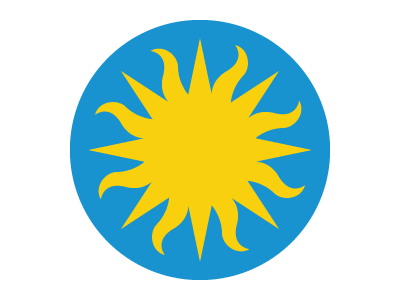
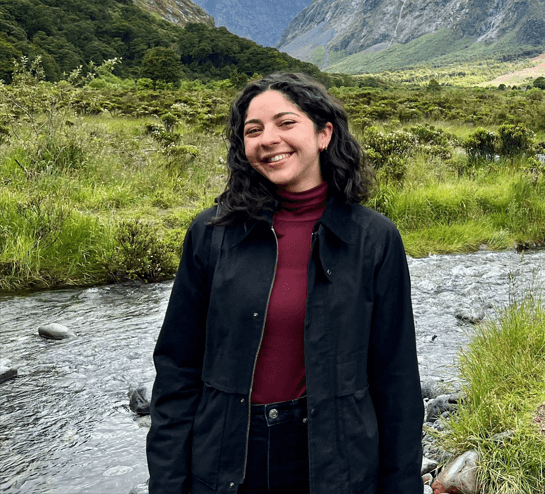
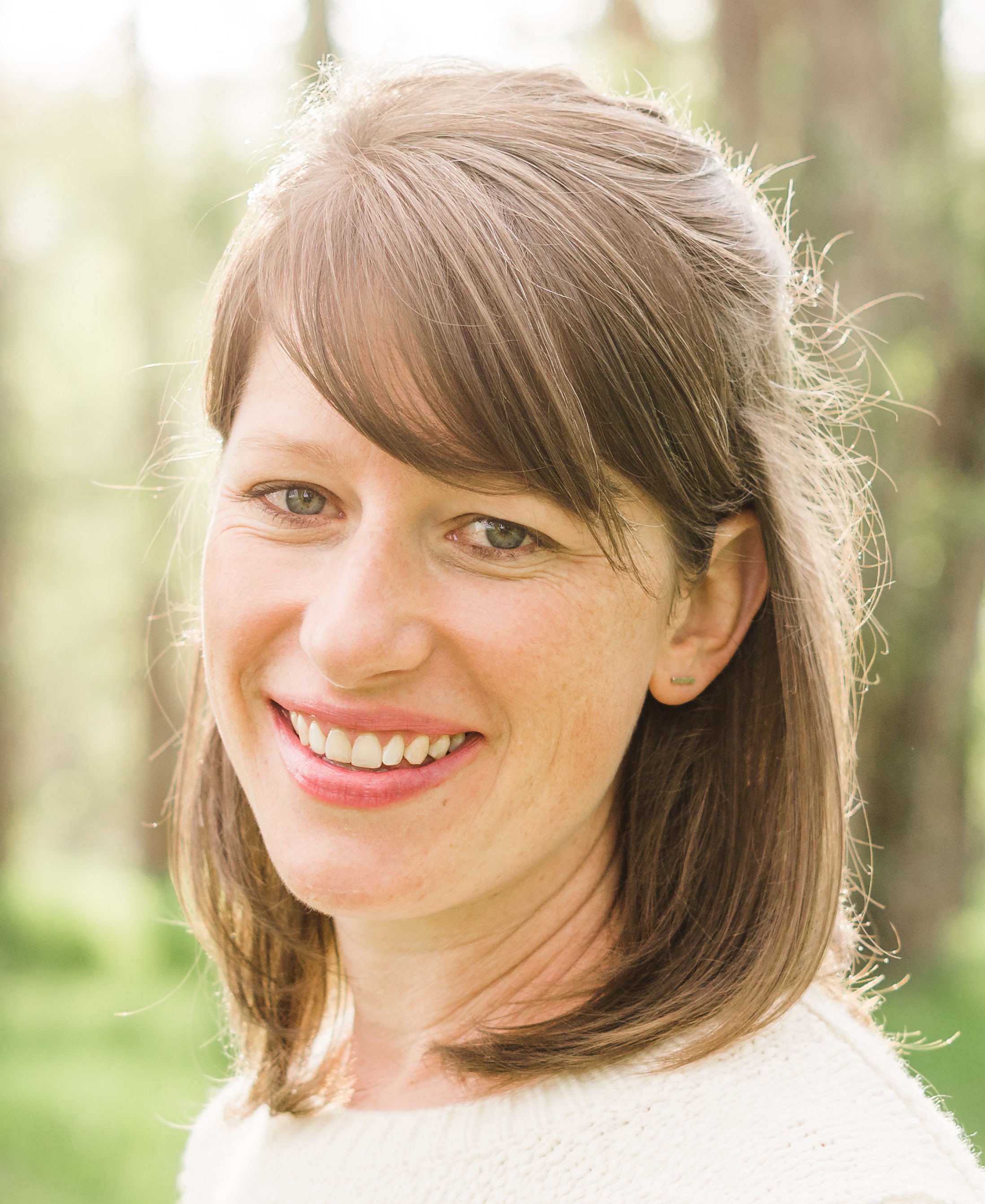












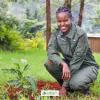










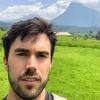








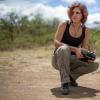






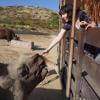

12 March 2023 3:21pm
Dear @Frank_van_der_Most and @StephODonnell , thanks for the comments. Regarding the importance of local knowledge in EO data classification, some thoughts follow:
1. Consider two AI applications: large language models (LLM) and object recognition in images. LLMs such as ChatGPT use words to predict the next word. Since language is its own meta-language, LLMs rely on the fact that our understanding of written text is direct. There are no intermediaries between humans and the printed page.
2. Object recognition in images (e.g., face recognition) is another kind of AI application where there is an implicit assumption: there are objects (faces, cars, etc) in the image and the role of the algorithm is to distinguish them from the background (considered as unwanted noise).
3. Classification and interpretation of Earth observation data, by contrast, uses a different paradigm. In principle, all of the data is informative. Unlike face recognition, there is no background. Every pixel counts. Pixel values are not words, but measures of reflections, emissions or echoes of the Earth's surface.
4. We use words to describe the reality external to us. The variety of nature is such that we have to use simplifications and taxonomies to describe our landscapes. Take the word "forest". As Chazdon et al. question in their 2016 paper, "when is a forest a forest?" The answer is: it depends on who is asking the question.
5. There have been many attempts to join pixel values with landscape descriptions. e.g, "pixels with NDVI > 0.75 are forests". Do they? What about dry forests that only have high NDVI values in the wet season? So far, all attempts to use direct links between pixel values and landscapes have failed the test of rigour.
6. Another example is the algorithm used by Global Forest Watch to measure tree cover gain and loss. As explained in the link below, "Not all tree cover is a forest". As GFW acknowledges, their algorithm has problems distinguishing forest from oil-palm plantation and to identify trees in dry forests (see more at https://research.wri.org/gfr/data-methods?utm_campaign=treecoverloss2021&Limitations#limitations).
7. Some of you may know the attempt made by FAO to standardize land use and land cover classification using the LCCS ontology. LCCS describes land properties based only on land cover types, disregarding land use. For example, LCCS does not distinguish ‘pasture’ from ‘natural grasslands’; it labels both as herbaceous land cover types. Classification in LCCS has no temporal reference. For a more detailed criticism, see Camara (2020).
8. There is no shortage of global land cover and land use maps. While these maps provide a general sense of the global picture, very few (if any) have local significance. As those in the WILDLABS community know, local context matters. My favourite example is the Brazilian Cerrado, an endangered biodiversity hotspot. In the last decades, many areas of natural vegetation in the Cerrado have been converted to pasture for cattle raising. However, global maps inevitably label both pastures and natural Cerrado vegetation as "grasslands". Clearly, such data is hardly usable for supporting studies and public policies in the Cerrado.
9. What is the alternative for mapping areas such as the Cerrado? The only way I see is gathering experts who understand the uniqueness of each ecosystem and try to relate each landscape to signals measured by EO satellites. This is hard and painstaking work, which many iterations.
10. The recent availability of open big EO data is a blessing and a curse. Using time series, experts can use the temporal evolution of the pixel values to improve the discriminatory power of EO data. Take the distinction between herbaceous pasture and natural Cerrado vegetation. All savannas of the planet (including the Cerrado) have evolved to be resilient to the dry season and to fire. Therefore, while in the wet season it is sometimes difficult to distinguish between herbaceous pasture and natural Cerrado, such distinction increases in the dry season. This is a case of where time series and big data improve the classification results.
11. Big EO data is also a curse, since it requires experts to rethink how to use EO data for land classification. Selecting training samples by looking at a single image is too simplistic when we are classifying time series. Linking the values of a time series to the temporal evolution of the landscapes requires relearning what EO data is.
Long story short: using Earth observation for conservation studies and public policy making is hard. It requires the combination of big EO data, good algorithms, and lots of expertise to understand the information inherent in the data. A nice challenge to all!
References cited:
Chazdon et al., "When is a forest a forest? Forest concepts and definitions in the era of forest and landscape restoration". Ambio, 45, p 538–550 (2016).
Camara, "On the semantics of big Earth observation data for land classification". Journal of Spatial Information Science, 20 (2020).